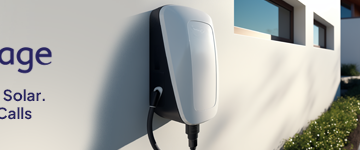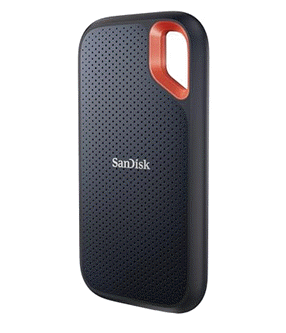2025-07-12 11:47:00
atomic14.substack.com
After “vibe coding” a software-based vibing button in my last video, I decided to take things one step further: vibe-coding the actual hardware. The challenge? Let AI design a working ESP32-S3 development board, from scratch.
For this experiment, I used Atopile — a tool that lets you define a hardware project using code and turns it into a KiCad PCB. I also enlisted Claude, an AI coding assistant that seemed to outperform Cursor for this task.
The board needed the basics: an ESP32-S3 module, USB-C power and data lines, a 3.3V regulator, reset and boot buttons, status LEDs, a quick connector, and the usual passives. I specified LCSC part numbers and 0603 sizes for resistors and capacitors, with GPIO 19 and 20 handling the USB data lines for proper differential routing.
Here’s the exact prompt I used:
I want to make an ESP32-S3 dev board.
We will need:
- ESP32-S3 module
- USB-C connector with 5.1K resistor on the CC lines
- 3.3V voltage regulator
- A red LED showing 5V is connected
- A green LED showing 3V3 is available
- A blue LED connected to a GPIO pin
- A QWIIC connector for peripherals
- Reset button
- Boot button
- Any additional passive components needed for the above
- There should be an RC circuit for the enable pin on the ESP32-S3 module
The USB-C should provide 5V power and the data lines should be connected directly to the ESP32-S3 module. Don't forget, there are normally 2 pins for each data line. These should both be connected to the ESP32-S3 module.
GPIO19 and GPIO20 on the ESP32-S3 module are USB D- and D+ respectively. Make sure these nets are labeled correctly so that differential routing works.
Use LCSC part numbers for all components. You will need to search the web for these. Use 0603 for all resistors and capacitors.
Use the command to add the component to the project.
echo "0" | ato create part -s
Add each component one at a time to the main.ato file.
Run the ato build command after every change you make to check your work.
ato build
Be very careful with the pin names/numbers in the components - check that you are using the correct ones. Do not modify the components. The AI took the prompt and started generating components and wiring instructions. To stay true to the spirit of “vibe coding,” I didn’t look at the code — I just kept saying “yes” and watched what happened.
Initially, everything looked great. The build succeeded, all components were found and added. But when I opened KiCad… nothing was wired up.
A quick nudge to Claude (“you forgot to connect anything”) got it back on track. After another build — success! Everything was wired.
Well, mostly.
It forgot a capacitor in the RC circuit on the EN pin. Again, a quick note to the AI and it was fixed. I swapped in a more sensible 10K resistor (it had chosen 330Ω for some reason), added some ground fills, and tidied up the layout.
What we got was surprisingly functional:
It’s not perfect (no schematic output yet unless you downgrade to KiCad 5), but as a first pass from an AI? Not bad at all.
Vibe-coding a PCB feels like the future. We’re close to being able to describe hardware in natural language and let the AI take care of the busywork. And while it’s not quite ready to replace a skilled engineer, it’s definitely ready to be your enthusiastic, if forgetful, assistant.
Next step? Should I send it off to PCBWay and see if it actually works?
Here’s the BOM for people interested in the components it picked:
Designator,Footprint,Quantity,Value,Manufacturer,Partnumber,LCSC Part #
"C1, C2, C3",C0603,3,,Samsung Electro-Mechanics,CL10A106MQ8NNNC,C1691
"C4, C5, C6",C0603,3,,YAGEO,CC0603KRX7R9BB104,C14663
CN1,CONN-SMD_4P-P1.00_SM04B-SRSS-TB-LF-SN,1,,JST Sales America,SM04B-SRSS-TB(LF)(SN),C160404
LED1,LED0603-RD,1,,Hubei KENTO Elec,Blue light 0603,C2288
LED2,LED0603-RD,1,,Foshan NationStar Optoelectronics,NCD0603C1,C84264
LED3,LED0603-RD,1,,Hubei KENTO Elec,KT-0603R,C2286
"R1, R2",R0603,2,,UNI-ROYAL,0603WAF5101T5E,C23186
R3,R0603,1,,TyoHM,RMC060310KFN,C269701
"R4, R5, R6",R0603,3,,UNI-ROYAL,0603WAF3300T5E,C23138
"SW1, SW2",SW-SMD_4P-L5.1-W5.1-P3.70-LS6.5-TL_H1.5,2,,XKB Connectivity,TS-1187A-B-A-B,C318884
U1,WIRELM-SMD_ESP32-S3-WROOM-1,1,,Espressif Systems,ESP32-S3-WROOM-1-N16R8,C2913202
U2,SOT-223-3_L6.5-W3.4-P2.30-LS7.0-BR,1,,Advanced Monolithic Systems,AMS1117-3.3,C6186
USB1,TYPE-C-SMD_TYPE-C-24P-QCHT,1,,SHOU HAN,TYPE-C 24P QCHT,C456013Keep your files stored safely and securely with the SanDisk 2TB Extreme Portable SSD. With over 69,505 ratings and an impressive 4.6 out of 5 stars, this product has been purchased over 8K+ times in the past month. At only $129.99, this Amazon’s Choice product is a must-have for secure file storage.
Help keep private content private with the included password protection featuring 256-bit AES hardware encryption. Order now for just $129.99 on Amazon!
Help Power Techcratic’s Future – Scan To Support
If Techcratic’s content and insights have helped you, consider giving back by supporting the platform with crypto. Every contribution makes a difference, whether it’s for high-quality content, server maintenance, or future updates. Techcratic is constantly evolving, and your support helps drive that progress.
As a solo operator who wears all the hats, creating content, managing the tech, and running the site, your support allows me to stay focused on delivering valuable resources. Your support keeps everything running smoothly and enables me to continue creating the content you love. I’m deeply grateful for your support, it truly means the world to me! Thank you!
|
BITCOIN
bc1qlszw7elx2qahjwvaryh0tkgg8y68enw30gpvge Scan the QR code with your crypto wallet app |
|
DOGECOIN
D64GwvvYQxFXYyan3oQCrmWfidf6T3JpBA Scan the QR code with your crypto wallet app |
|
ETHEREUM
0xe9BC980DF3d985730dA827996B43E4A62CCBAA7a Scan the QR code with your crypto wallet app |
Please read the Privacy and Security Disclaimer on how Techcratic handles your support.
Disclaimer: As an Amazon Associate, Techcratic may earn from qualifying purchases.











































































































